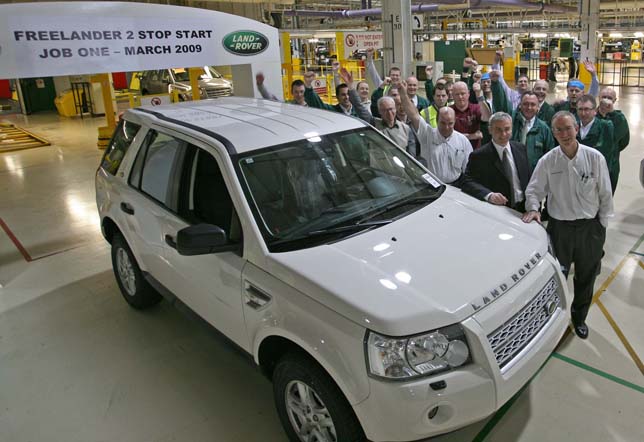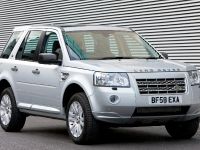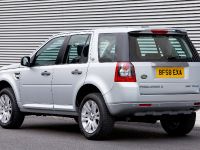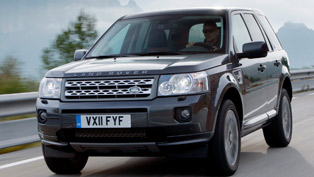Freelander 2 TD4_e - Land Rover's Most Fuel-Efficient Car
The first official Freelander 2 TD4_e was produced at the Jaguar Land Rover assembly facility at Halewood today. The new vehicle is Land Rover's most fuel-efficient to date and is the world's first SUV to feature an intelligent Stop-Start system. It is also the first production vehicle to incorporate technologies from the Land Rover's programme of sustainable engineering initiatives, collectively named ‘e_TERRAIN TECHNOLOGIES'.
During the standard EU4 Cycle, the CO2 emissions of the Freelander 2 TD4_e are reduced by 8%, compared with the outgoing manual diesel Freelander 2. Fuel economy also improves from 37 mpg to over 42 mpg and, in real world tests, Land Rover engineers have measured fuel savings approaching 20% in heavy urban traffic.
Phil Popham, Land Rover's Managing Director, said: "The Stop-Start Freelander 2 is the first production vehicle to benefit from the massive €800 million investment in sustainable technologies by Jaguar and Land Rover. The Stop-Start feature will be included as standard on all Freelander 2 TD4 manual models, with no associated increase in list prices."
The Porcelain White 'Job One' vehicle, which is destined for a customer in Spain, rolled off the production line at 11.00. Those members of the Halewood workforce who have been instrumental in ensuring a successful launch of the new vehicle were present to celebrate.
Michael Straughan, Operations Director for Halewood Operations, said: "Everyone at Halewood is delighted to be building a vehicle which uses this very special Stop-Start technology. It is the first time that a Land Rover product has utilised a system from the ‘e_TERRAIN TECHNOLOGIES' package and we have been working hard to ensure the product is launched with exceptional build quality.

Prototypes of the vehicle have already received excellent feedback from automotive journalists and dealers and we should see the first production vehicles in dealerships around the world, in a few weeks time."
The Halewood facility employs 2000 people and is recognised throughout the industry as an example of excellence for quality and lean manufacturing. Halewood also builds the Jaguar X-TYPE alongside the Freelander 2.
Stop-Start System Land Rover's new Stop-Start system improves fuel efficiency in urban and stop-start driving. The vehicle automatically shuts down the engine in appropriate conditions, resulting in zero tail-pipe emissions and saving fuel which otherwise is used idling the engine when stationary. But the engine will instantly re-start when the driver is ready to move off.
There are also sophisticated controls in place to help ensure the Stop-Start system does not compromise the needs of either the driver or vehicle. For the engine to shut down, the vehicle must be stationary, the gearbox in neutral and the clutch pedal raised. To restart, the driver simply depresses the clutch and the enhanced starter motor engages the engine, ready for when first gear is selected.
The Stop-Start system is automatically activated each time the ignition is turned on, although there is a switch on the fascia to disable the system, if the driver so desires.
Added Fuel Economy Benefits Along with the intelligent Stop-Start system, the Freelander 2 TD4_e includes a series of additional enhancements which help to deliver fuel economy and CO2 benefits. There is a new gearshift indicator light in the instrument pack, advising the driver to change gear when a higher gear will allow the vehicle to operate more fuel-efficiently. This is calculated by the Freelander 2 TD4_e's fully mapped engine.
Software developments to the driveline systems on the Freelander 2 TD4_e generate CO2 benefits without reducing Land Rover's renowned capability. Land Rover engineers are also collaborating with tyre suppliers to drive improvements to fuel economy through reduced rolling losses. Tyre characteristics including rolling resistance are optimised for the entire range of available tyre sizes on Freelander 2 models.
End of Life Vehicle Certification The Freelander 2 is the first Land Rover to achieve compliance with the "EU Directive 2005/64/EC on the type approval of motor vehicles with regard to their reusability, recyclability and recoverability" ahead of forthcoming legislation. This refers to 85 per cent of the vehicle being re-usable or recyclable, and 95 per cent being re-usable or recoverable. The 8% improvement equates to a CO2 emissions reduction of 15g/km on the standard Freelander 2 TD4 manual (from 194g/km to 179g/km). In terms of fuel-efficiency, consumption is reduced from 7.5 litres per 100km to 6.7 litres per 100km, a saving of 0.8 litres of fuel every 100km (from 37.7 to 42.2 mpg – an improvement of 4.5mpg).








